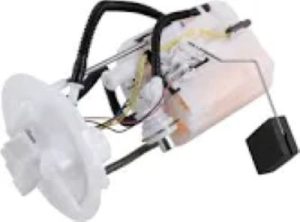Fuel pump flow tests are generally expressed in liters per hour (LPH) and measure the amount of fuel a pump can flow over duration. A typical flow test result for the previously mentioned high performance pump on one of our HEC fuel pumps might say that it will deliver 340 LPH at 43 psi, which is feed pressure required for regular EFI engines. For modified engines spitting out more horsepower, flow testing is an indicator of whether a fuel pump can deliver sufficient fuel. For example, if you have a 600 horsepower engine that needs to supply at least 300 LPH of fuel at full power your pump must be able to provide nearly twice the volume of fuel required at maximum element expanding the life expectancy of your new pump once installed.
Special equipment, including a flow bench, is required for technicians to perform fuel pump flow tests. This pump is a part of tool that allow to simulate engine conditions and measure the output of the pump at constant real-time. Specifically, a Walbro fuel pump that was tested on a flow bench may tell you something like 300 LPH at 30 psi and 250 LPH at 50 psi. This is important for tuning and overall, larger pressure typically diminishes flow rate, which could cause less power in the engine.
Fuel pump flow tests are good for detecting possible problems such as clogged inferior fuel filters or weak pumps that may supply insufficient fuel volume. Testing the pump might bring forth a result of 180 LPH instead of the desired 250 LPH could mean either that there is a restriction in fuel line or internal failure on pump. A fuel pump needs to be tested on a regular basis in order to survive longer and be detected during its normal life if it fails, otherwise; the engine may suffer from damage due to not enough fuel ending up in the combustion chamber. Modern fuel pumps usually go out somewhere at about 100K to 150K miles, but the test flow numbers fall way off by then, which makes me question whether some of these jobs should be done sooner.
High-end vehicles need to have ideal fuel circulation. Teams even do flow tests on their fuel pumps before endurance racing events sometimes to make sure they can handle the demands of the race, things like 24 Hours of Nürburgring. Failure to maintain the proper flow of fuel under high-pressure operating conditions can result in the erosion of valuable time, or even catastrophic engine failure costs as much as $100k in repair and lost sponsorships.

Once the flow test is done, technicians will also bench-test the fuel pressure regulator to ensure it maintains the necessary pressure. Broken Regulator: The result of a broken regulator is skewed test results as the fuel pressure can go over or below the specified amount if too much or little gas is being pumped into your Pontiac. For engines that are pumping out more ponies, especially in a racing application where the engine is doing some serious work, it all comes down to fuel pressure. Air-fuel mixtures that are just 5 psi off from optimal can result in rich or lean conditions, which impact power output as well as fuel efficiency.
Those who swap in a fresh fuel pump will tend to do flow tests to verify that the pumps meet the engine's fuel requirements. Popular performance parts suppliers, such as AEM or Bosch, will often list flow rate data for their pumps so that buyers know which pump they need. If an engine produces more than 800 horsepower, for example, a pump that makes only 340 LPH at 43 psi may be insufficient to avoid fuel starvation.
Visit Fuel Pump to get more information on several other types of fuel pumps and how to do a proper flow test.